Table of Contents
Introduction:
Neocaridina shrimp are a popular choice among beginner aquarists due to their hardiness and ease of care. These small freshwater crustaceans are native to Taiwan and come in a variety of colors, including red, yellow, and even blue. They are known for their vibrant colors and active behavior, making them a great addition to any aquarium.
Not only are they easy to care for, but they are also relatively inexpensive, making them a great option for those new to the hobby or on a budget. They are also a great option for those with limited space, as they only require a small tank to thrive.
In this article, we will cover everything you need to know about Neocaridina shrimp, including tank setup, tankmates, feeding, common diseases affecting them, and reproduction. By the end of this article, you will have a clear understanding of how to care for these fascinating creatures and how to create the perfect environment for them to thrive.
Tank Setup:
The first step in setting up a tank for Neocaridina shrimp is to ensure that the water conditions are suitable for them. These creatures are sensitive to water conditions and require a pH range of 6.5-7.5 and a water temperature between 68-78 degrees Fahrenheit. It’s important to test your water regularly and make adjustments as needed to maintain these conditions.
A good rule of thumb when it comes to substrate is to use a neutral gravel or sand that will not affect the pH levels of the water. This will help to ensure that the shrimp are able to thrive in their environment. Additionally, it’s important to ensure that the tank has adequate filtration and circulation. A good filter will help to keep the water clean and free of debris, while proper circulation will ensure that the shrimp have access to oxygen-rich water.
Tankmates:
When it comes to choosing tank mates for your Neocaridina shrimp, it’s important to keep in mind their peaceful nature. They can be kept with a variety of other freshwater species, including fish and snails. They can be kept in a community tank with other peaceful species such as Neon Tetras, Guppies, or even other types of shrimp. However, it’s important to note that larger fish may view the shrimp as a food source, so it’s best to stick with smaller species that are less likely to pose a threat. Additionally, some species of fish may have a tendency to pick on the shrimp, so it’s best to do your research and choose tankmates that are known to be compatible.
It’s also important to consider the bioload when choosing
tank mates for your Neocaridina shrimp. Bioload refers to the total amount of waste and pollution produced by the inhabitants of the tank. It’s important to choose tank mates that have a low bioload in order to prevent water quality issues that can harm your shrimp. Some examples of low-bioload fish include Neon Tetras or Guppies, while larger fish such as Cichlids have a higher bioload.
In addition to choosing compatible tankmates, it’s also important to consider the size of your tank when adding shrimp. Neocaridina shrimp are small and do not require a lot of space, so a 10-gallon tank is suitable for a small colony. However, it’s important to keep in mind that each shrimp requires about 2 gallons of water, so it’s best to stick with a smaller number of shrimp in a smaller tank.
Another important factor to consider when setting up your aquarium is the amount of hiding spots and vegetation provided. Shrimp are naturally timid creatures, and having plenty of hiding spots and vegetation will help them feel more secure in their environment. This can be achieved by adding live or artificial plants, rocks, and other decorations to the tank.
Feeding:
One of the most important aspects of maintaining healthy Neocaridina shrimp is providing them with the proper diet. These shrimp are opportunistic feeders and will eat a variety of food, including flakes, pellets, and even algae. It’s important to provide them with a well-balanced diet that includes a variety of food sources to ensure that they are getting all the nutrients they need. A good diet for Neocaridina shrimp should include a mix of protein, carbohydrates, and vegetables. Some popular food options include brine shrimp, bloodworms, and blanched vegetables such as spinach or lettuce.
It’s also important to note that Neocaridina shrimp are scavengers and will eat algae in the tank. However, this should not be their sole source of food, and they should be fed a variety of food options to ensure they are getting all the nutrients they need.
Feeding frequency:
Another important aspect of feeding Neocaridina shrimp is the frequency of feeding. Overfeeding can lead to water quality issues, so it’s important to feed them the appropriate amount of food for their size and the size of the tank. A good rule of thumb is to feed the shrimp small amounts of food several times a day, instead of one large feeding. This will help to prevent overfeeding and keep the water quality in check.
Reproduction:
One of the most appealing aspects of Neocaridina shrimp is their ability to reproduce in captivity. These shrimp will breed readily in a well-maintained tank, and their eggs will hatch into miniature versions of the adults. This process can be quite fascinating to watch and can lead to a thriving colony of shrimp in your tank.
To encourage breeding, it’s important to provide the shrimp with optimal water conditions, as well as a balanced diet. Additionally, keeping a healthy ratio of males to females in the tank can also help to increase the chances of breeding. Once the shrimp have mated and the female has laid eggs, she will carry them on her swimmerets for about two weeks, until they hatch into miniature versions of the adults.
It’s important to note that the shrimp fry are very small and delicate, and will need to be fed very small food such as baby brine shrimp, or a specially formulated fry food. They will also require a separate tank or breeding box to protect them from larger tankmates.
Caring for the fry can be a bit challenging, but it’s also a great way to increase the size of your colony and enjoy the fascinating process of reproduction.
The Different Types of Neocaridinas and Which Species are Best Suited For Your Aquarium
We will explore the different types of Neocaridina shrimp and which species are best suited for your aquarium:
Red Cherry Shrimp (Neocaridina heteropoda var. “red”)
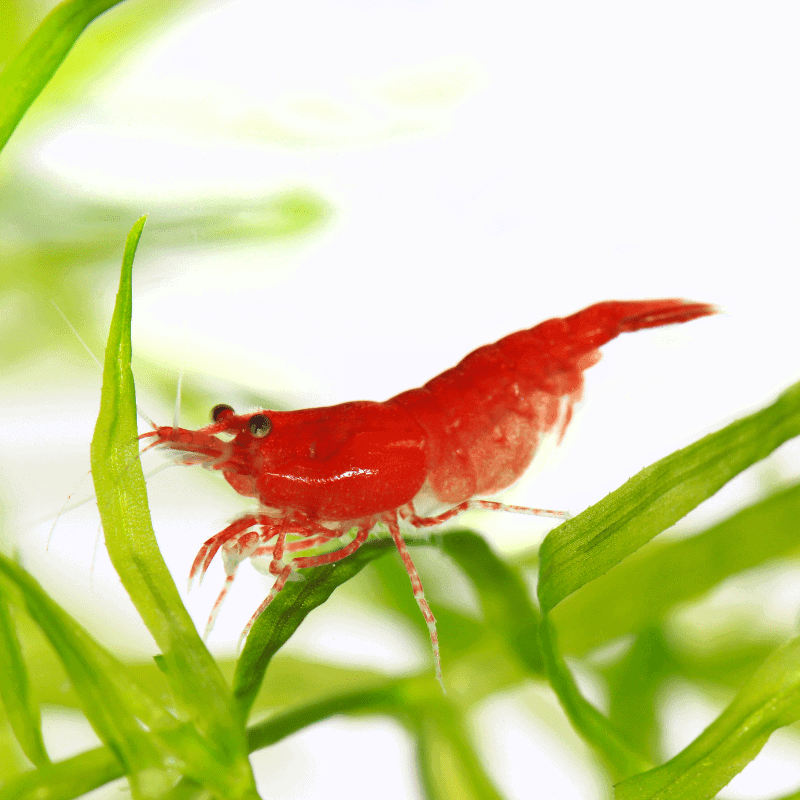
- As its name suggests, these shrimp are known for their bright red coloration.
- They are hardy, easy to care for, and reproduce readily in captivity, making them a great choice for beginner aquarists.
- They are also relatively small, reaching a maximum size of around 1.5 inches, making them suitable for smaller aquariums.
Yellow Shrimp (Neocaridina heteropoda var. “yellow”)
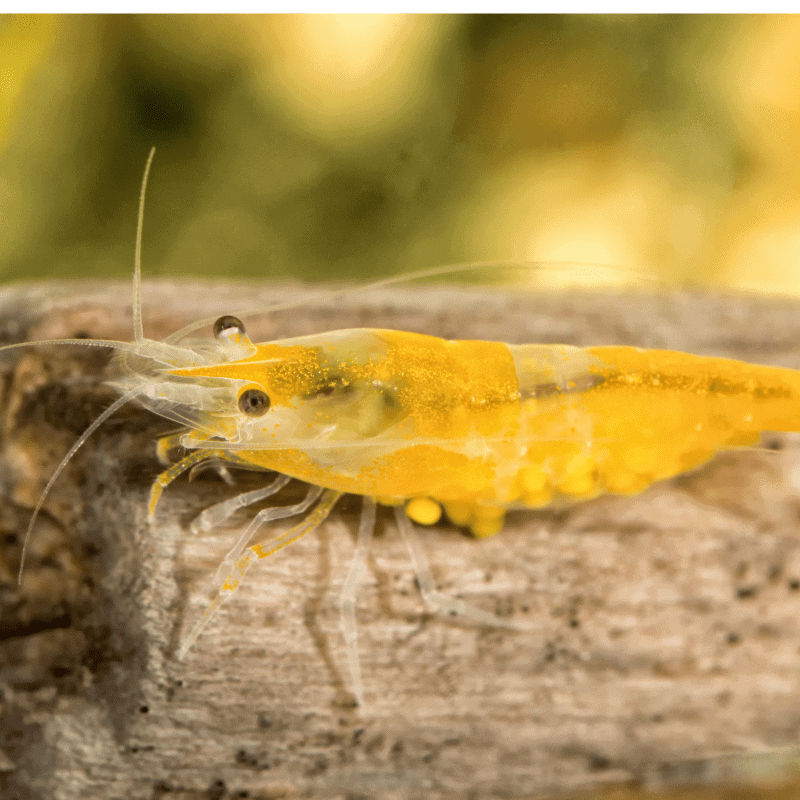
These shrimp are similar in care to the Red Cherry Shrimp, but are known for their bright yellow coloration.
They are also hardy and reproduce readily in captivity, and have the same maximum size of around 1.5 inches.
Blue Velvet Shrimp (Neocaridina heteropoda var. “blue”)

- These shrimp have a striking blue coloration and are known for their hardiness and ease of care.
- They are also relatively small, reaching a maximum size of around 1.5 inches, and reproduce readily in captivity.
Snowball Shrimp (Neocaridina heteropoda var. “snowball”)

- These shrimp are known for their white coloration with red eyes and are considered one of the most beautiful Neocaridina shrimp varieties.
- They are hardy and easy to care for, and reproduce readily in captivity. They have the same maximum size of around 1.5 inches.
Taiwan Bee Shrimp (Neocaridina davidi var. “Taiwan Bee”)
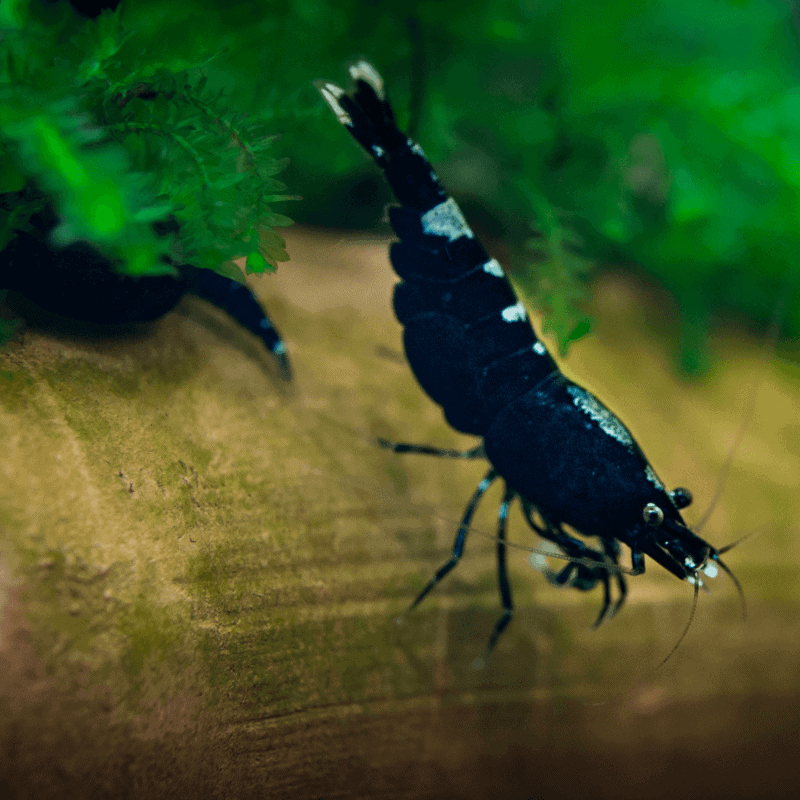
- These shrimp are known for their hardiness and ease of care, but can reach a maximum size of up to 2 inches.
- They also reproduce readily in captivity and come in a variety of colors, including red, yellow, black, and even blue.
Black King Kong Shrimp (Neocaridina heteropoda var. “black king kong”)

- These shrimp are known for their jet black coloration, making them a striking addition to any aquarium.
- They are hardy, easy to care for, and reproduce readily in captivity. They have the same maximum size of around 1.5 inches.
When choosing the right Neocaridina shrimp for your aquarium, it’s important to consider the size of your tank, the water conditions, and the compatibility with other tank mates. The Red Cherry Shrimp, Yellow Shrimp, Blue Velvet Shrimp, Snowball Shrimp, Taiwan Bee Shrimp and Black King Kong Shrimp are all great options for beginner aquarists, but it’s important to do your research and choose the species that best suits your aquarium.
It’s also important to note that while all Neocaridina shrimp are relatively easy to care for, some species may be more sensitive to water conditions and require more attention. For example,
What Diseases Should You Look Out For When Keeping Neocardinia Shrimp?
We will list some common diseases that you should look out for when keeping Neocaridina shrimp and discuss how to prevent and treat them.
White Spot Disease (Ich)
White spot disease, also known as Ich, is a common parasitic infection that affects a variety of freshwater fish and crustaceans. It is caused by a single-celled parasite called Ichthyophthirius multifiliis, which attaches itself to the shrimp’s body and causes small white spots to appear. These spots may be accompanied by other symptoms such as scratching, rapid breathing, and a lack of appetite.
Prevention:
To prevent white spot disease, it’s important to maintain good water quality and perform regular water changes. It’s also important to quarantine any new shrimp before adding them to your tank, as they may be carrying the parasite.
Treatment:
Treatment for white spot disease includes the use of a commercial Ich treatment, such as copper sulfate or malachite green, which can be added to the water according to the manufacturer’s instructions. It’s also important to raise the water temperature to around 82-84 degrees Fahrenheit, as this will help to speed up the life cycle of the parasite and make it more vulnerable to treatment.
Shrimp Pest (Vorticella)
Shrimp Pest, also known as Vorticella, is a protozoan infection that affects Neocaridina shrimp. It is characterized by small, white, cotton-like growths on the shrimp’s body and can lead to lethargy, lack of appetite, and even death if left untreated.
Prevention:
To prevent shrimp pest, it’s important to maintain good water quality and perform regular water changes. It’s also important to quarantine any new shrimp before adding them to your tank, as they may be carrying the infection.
Treatment:
Treatment for shrimp pest includes the use of a commercial shrimp pest treatment, such as formalin or potassium permanganate, which can be added to the water according to the manufacturer’s instructions. It’s also important to raise the water temperature to around 82-84 degrees Fahrenheit, as this will help to speed up the life cycle of the parasite and make it more vulnerable to treatment.
Bacterial infections
Bacterial infections are common among Neocaridina shrimp and can lead to a variety of symptoms, including discoloration, lethargy, and even death if left untreated. Some common types of bacterial infections include columnaris, septicemia, and Vibrio.
Prevention:
To prevent bacterial infections, it’s important to maintain good water quality and perform regular water changes. It’s also important to avoid overcrowding your tank, as this can lead to increased stress and make the shrimp more susceptible to infection.
Treatment:
Treatment for bacterial infections includes the use of a commercial antibiotic treatment, such as Maracyn or Kanaplex, which can be added to the water according to the manufacturer’s instructions. It’s also important to maintain the proper water conditions, including pH and temperature, as this can help to prevent the spread of the infection.
Parasitic infections
Parasitic infections are another common problem among Neocaridina shrimp. These infections can be caused by a variety of parasites, including flukes, planaria, and nematodes. They can lead to a variety of symptoms, including lethargy, discoloration, and even death if left untreated.
Prevention:
To prevent parasitic infections, it’s important to maintain good water quality and perform regular water changes. It’s also important to quarantine any new shrimp before adding them to your tank, as they may be carrying the infection.
Treatment:
Treatment for parasitic infections includes the use of a commercial parasitic treatment, such as PraziPro or API General Cure, which can be added to the water according to the manufacturer’s instructions. It’s also important to maintain the proper water conditions, including pH and temperature, as this can help to prevent the spread of the infection.
Conclusion:
In conclusion, Neocaridina shrimp are the perfect pet for beginner aquarists. They are hardy, easy to care for, and come in a variety of colors. They can be kept in a community tank with other freshwater species, and will breed readily in captivity. As long as you provide them with a well-maintained tank and a balanced diet, they will thrive and add a touch of color to your aquarium.
Red Cherry Shrimp, Yellow Shrimp, Blue Velvet Shrimp, Snowball Shrimp, Taiwan Bee Shrimp and Black King Kong Shrimp are all great options for beginner aquarists, but it’s important to do your research and choose the species that best suits your aquarium
It’s also important to note that keeping shrimp can be a great way to learn about water chemistry, biology and the importance of maintaining a healthy ecosystem in your tank.
By following the guidelines outlined in this article, you’ll be well on your way to creating the perfect home for your Neocaridina shrimp and enjoying their vibrant colors and active behavior.
FAQs
What are Neocaridina shrimp?
Neocaridina shrimp are a type of freshwater crustacean that are native to Taiwan. They are known for their hardiness and ease of care, making them a popular choice among aquarists.
How big do Neocaridina shrimp get?
Neocaridina shrimp typically reach a maximum size of around 1.5 inches, making them suitable for smaller aquariums.
What are the common types of Neocaridina shrimp?
The common types of Neocaridina shrimp include Red Cherry Shrimp, Yellow Shrimp, Blue Velvet Shrimp, Snowball Shrimp, Taiwan Bee Shrimp, and Black King Kong Shrimp.
What is the best water temperature for Neocaridina shrimp?
The best water temperature for Neocaridina shrimp is between 68-78 degrees Fahrenheit.
What is the pH range for Neocaridina shrimp?
The ideal pH range for Neocaridina shrimp is between 6.5-7.5.
What should I feed my Neocaridina shrimp?
Neocaridina shrimp are opportunistic feeders and will eat a variety of food, including flakes, pellets, and even algae. A good diet for Neocaridina shrimp should include a mix of protein, carbohydrates, and vegetables.
How often should I feed my Neocaridina shrimp?
It’s best to feed your Neocaridina shrimp small amounts of food several times a day, instead of one large feeding.
Can Neocaridina shrimp be kept with other fish?
Neocaridina shrimp can be kept with a variety of other freshwater species, including fish and snails. However, it’s important to note that larger fish may view the shrimp as a food source, so it’s best to stick with smaller species that are less likely to pose a threat.
Can Neocaridina shrimp reproduce in captivity?
Yes, Neocaridina shrimp can reproduce readily in captivity and are known for their hardiness and ease of care.
How do I know if my Neocaridina shrimp are healthy?
Healthy Neocaridina shrimp will have a vibrant color, be active, and have a good appetite. They should also have a clean and smooth body without any signs of white spots, cotton-like growths, discoloration, or lethargy.
What should I do if I notice any signs of disease in my Neocaridina shrimp?
If you notice any signs of disease in your Neocaridina shrimp, it’s important to take action as soon as possible to prevent it from spreading. This may include performing a water change, increasing the water temperature, or treating the tank with a commercial treatment.
Can Neocaridina shrimp live in a planted tank?
Yes, Neocaridina shrimp can live in a planted tank and may even help to keep the plants clean by eating algae.
What are some common diseases that can affect Neocaridina shrimp?
Some common diseases that can affect Neocaridina shrimp include White Spot Disease (Ich), Shrimp Pest (Vorticella), bacterial infections, and parasitic infections.
Can Neocaridina shrimp live in a cold water tank?
No, Neocaridina shrimp require a water temperature between 68-78 degrees Fahrenheit, and a cold water tank would not be suitable for them.
Can I keep Neocaridina shrimp with other invertebrates?
Yes, Neocaridina shrimp can be kept with other invertebrates as long as they are compatible and there is enough food and space for all inhabitants.
How long do Neocaridina shrimp live?
The lifespan of Neocaridina shrimp is around 1-2 years.
How do I breed Neocaridina shrimp?
Neocaridina shrimp are known to breed readily in captivity. To breed them, you need to provide suitable conditions such as proper water temperature, pH and food, as well as a healthy population of both male and female shrimp.
Do Neocaridina shrimp need a filter?
Neocaridina shrimp do not require a specific type of filter, but a good quality filter can help to maintain good water quality and reduce debris in the tank.
Can Neocaridina shrimp survive in a brackish water tank?
No, Neocaridina shrimp are freshwater crustaceans and require freshwater conditions to survive.
Is it necessary to have a heater for Neocaridina shrimp tank?
A heater is not strictly necessary for a Neocaridina shrimp tank, but it is recommended to maintain the ideal water temperature of 68-78 degrees Fahrenheit for the shrimp’s health and well-being.
How do I know if my Neocaridina shrimp are ready to breed?
You can tell that your Neocaridina shrimp are ready to breed by observing their behavior. Female shrimp will appear plump and carry eggs, while males will display courtship behavior and develop larger claws.
What are the ideal breeding conditions for Neocaridina shrimp?
The ideal breeding conditions for Neocaridina shrimp include proper water temperature, pH, and water quality. It’s also important to provide a suitable substrate, such as neutral gravel or sand, and plenty of hiding spots and vegetation for the shrimp to feel secure.
How long does it take for Neocaridina shrimp to breed?
The breeding process for Neocaridina shrimp can vary, but it typically takes around 1-2 weeks for the eggs to hatch.
What should I do with the baby shrimp after they hatch?
Baby shrimp, also known as fry, should be removed from the main tank and placed in a separate tank or rearing container to prevent them from being eaten by other inhabitants. They can be fed with small food, such as baby brine shrimp, or crushed flakes.
Can I breed different types of Neocaridina shrimp together?
Yes, different types of Neocaridina shrimp can be bred together, but it’s important to keep in mind that the offspring will likely be a mix of the different varieties and may not retain the color or patterns of the parents.
How to identify a female Neocaridina shrimp?
To identify a female Neocaridina shrimp, look for the following characteristics:
- Plumpness: Female Neocaridina shrimp will appear plump and swollen, especially when they are carrying eggs.
- Egg sac: Female Neocaridina shrimp will have a small, clear egg sac located under their tail, which can be seen as small white dots.
- Size: Female Neocaridina shrimp are typically larger than males.
- Color: Female Neocaridina shrimp may have a different color than males, depending on the species. For example, in red cherry shrimp, females are typically redder.
- Behavior: Female Neocaridina shrimp are typically less active than males and spend more time hiding or tending to their eggs.
It’s important to note that some of these characteristics may not be noticeable in all species of Neocaridina shrimp, or in young shrimp. A good way to confirm the sex of your shrimp is to observe them over a period of time, and when possible compare them with other known males and females of the same species.
How long do neocaridina shrimp carry eggs?
The duration of time that Neocaridina shrimp carry eggs can vary depending on the species and the conditions of the tank. On average, most Neocaridina shrimp species carry eggs for around 2-4 weeks before they hatch. The female shrimp will carry the eggs under their tail, and when they are ready to hatch, the eggs will turn darker in color, usually red or orange. After hatching, the baby shrimp (fry) will be free swimming and should be removed to a separate tank or container to prevent them from being eaten by other inhabitants of the tank.
Difference between caridina shrimp vs neocaridina?
Caridina and Neocaridina are both types of freshwater shrimp, but there are some key differences between them:
- Origin: Caridina shrimp are native to Southeast Asia, while Neocaridina shrimp are native to Taiwan.
- Hardiness: Caridina shrimp are generally considered more sensitive and require more specific water parameters than Neocaridina shrimp. Neocaridina shrimp are known for their hardiness and ease of care, making them a popular choice among aquarists.
- Color variations: Caridina shrimp have a limited range of color variations, while Neocaridina shrimp have a wide range of colors, including red, yellow, blue, black, and white.
- Breeding: Caridina shrimp are known to be difficult to breed in captivity, while Neocaridina shrimp breed readily in captivity and are known for their hardiness and ease of care.
- Water Parameters: Caridina shrimp require specific water parameters, such as a pH of around 6.5-7.0 and a water temperature of around 68-78°F, while Neocaridina shrimp can tolerate a wider range of water parameters and are more adaptable.
In summary, Caridina shrimp are generally considered more delicate and require more specific water parameters and care, while Neocaridina shrimp are hardier and easier to care for and maintain.
If you have reached thus far you might also be interested in other articles, please check out Everything You Need to Know About Black Skirt Tetras (Widow Tetras) and The 10 best schooling fish for a visually stunning freshwater tank
References
Here are some international bodies that provide information on Cherry Shrimp:
- International Union for Conservation of Nature (IUCN): The IUCN is a global organization that provides information and resources for the conservation and sustainable use of natural resources, including freshwater shrimp like Cherry Shrimp. Their website offers information on the ecological and economic significance of freshwater shrimp, as well as resources on their conservation.
Link: https://www.iucn.org/theme/species/our-work/freshwater-species/freshwater-shrimp
- Aquatic Animal Health Standards Commission (AAHSC): The AAHSC is an international body that provides standards and guidelines for the health and welfare of aquatic animals, including Cherry Shrimp. Their website offers information on the health and disease management of aquatic animals, as well as guidelines on the import and export of live animals.
Link: https://www.oie.int/en/standard-setting/aquatic-code/access-online/
- Food and Agriculture Organization of the United Nations (FAO): The FAO is a specialized agency of the United Nations that works to eradicate hunger and promote sustainable agriculture. Their website offers information on aquaculture, including the cultivation of freshwater shrimp like Cherry Shrimp.
Link: http://www.fao.org/fishery/culturedspecies/Neocaridina_davidi/en
- The Shrimp List: The Shrimp List is an online community of shrimp enthusiasts that provides information on a variety of shrimp species, including Cherry Shrimp. Their website offers forums, articles, and resources on Cherry Shrimp care, breeding, and tank setup.
Link: https://www.shrimplist.com/cherry-shrimp/
These organizations provide valuable information on the care and conservation of Cherry Shrimp, as well as guidelines on the import and export of live animals. It’s important to consult these resources when working with Cherry Shrimp to ensure their health and well-being, as well as the sustainability of their natural habitats.
I am a passionate aquarist with over 30 years of hands-on experience in fishkeeping. My journey began at a young age, collecting fish from the wild and learning through experimentation. Specializing in tropical fish, I bring a deep understanding of the hobby to FishKeepingMadeSimple. The site provides honest, detailed reviews of essential products and accessories to help fellow enthusiasts create the best environments for their fish.

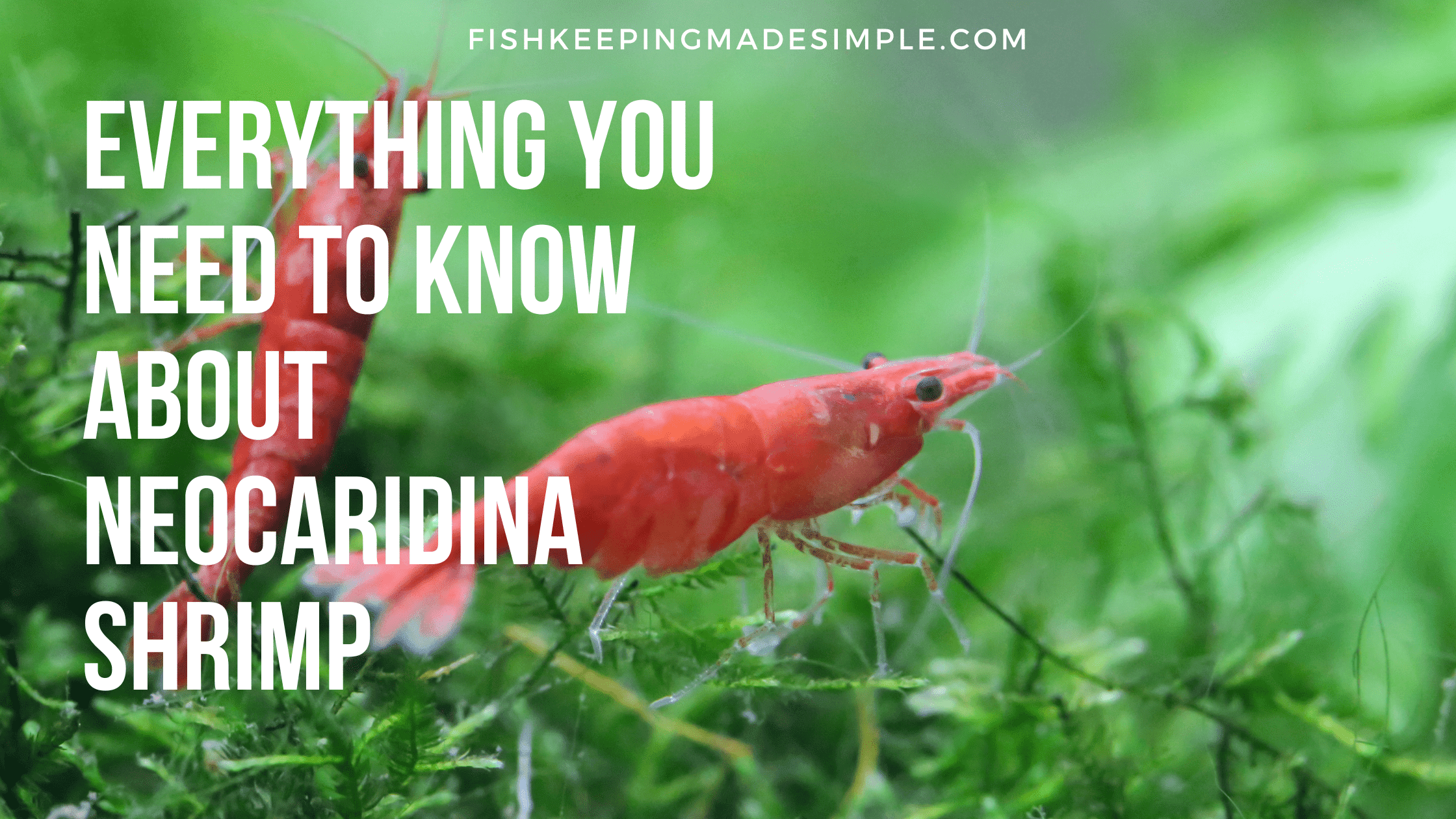








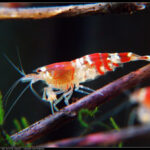
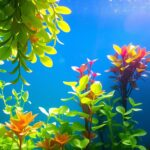
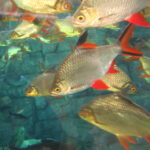
[…] you need to know about their care, varieties, and tank setup secrets. Whether you’re a beginner or an experienced aquarist, this guide will provide you with all the information you need to create an ideal environment for […]
[…] diet, I will delve into every aspect of caring for black phantom tetras. Whether you are a seasoned aquarist or a beginner, this guide will equip you with the knowledge and skills to ensure the well-being and longevity of […]
[…] neon tetras, including their diet, tank conditions, and suitable tank mates. Whether you’re a beginner or an experienced aquarist, these tips will help you create a thriving and visually appealing aquarium that showcases the […]
[…] tropical fish. It is easy to care for and can thrive in a variety of tank setups. Whether you are a beginner or an experienced aquarist, hair grass can be a beautiful and low-maintenance addition to your […]
[…] vibrant and beautiful fish are not only popular but also easy to care for. Whether you’re a beginner or an experienced aquarist, guppies are a fantastic addition to any freshwater […]
[…] from their space. For breeding success, the tank must feel right to them. A 29 gallon (110 liters) tank is the minimum size needed. This gives them room to claim some space as theirs. Also, set up caves or PVC pipes for spawning. […]
[…] and propagating dwarf grass in your aquarium can be a rewarding experience. Whether you’re a beginner or an experienced aquarist, these methods will help you successfully grow and propagate dwarf grass in your tank. Follow these […]